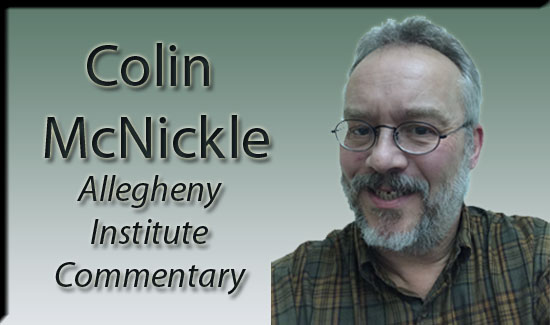How Are School Districts Spending Coronavirus Aid?
![]()
(November 11, 2020)–Summary: The Elementary and Secondary School Emergency Relief Fund (ESSER) is a $13.2 billion allocation contained in the CARES Act to help schools deal with the effects of the coronavirus. There are restrictions on how money is to be spent and requirements for record retention, reporting and unexpended funds.
_________________________________________________________________
According to the Pennsylvania Department of Education, the state received $523.8 million in May; $471.4 million was for direct allocation to 500 school districts ($400.1 million) and 167 charter schools ($71.3 million for brick and mortar and cyber) under an existing federal formula. In cases where school districts have low-income students that attend non-public schools, the act requires districts to provide a portion of their allocation to those schools. This totaled $19.2 million from 387 of the state’s school districts.
In Allegheny County, the 43 school districts are to receive $28.8 million and the 25 charter schools in the county are to receive $3.9 million. Of the districts’ total, $1.7 million is reserved for the non-public school requirement (referred to as the non-public equitable share).
All eligible recipients had to apply for the money. A response to an open records request for the contracts between school districts in the county and the Pennsylvania Department of Education shows that contracts have either been completed (30 districts), are under review (six districts) or in process (seven districts).
Based on a review of the completed contracts (representing $24.9 million of the $28.8 million), ESSER expenditures are divided into public and non-public instruction and public and non-public support/non-instructional categories. Funds have been or will be spent on salaries and benefits ($4.4 million), purchased services/other/indirect costs ($5.8 million), supplies ($13.8 million) and property ($0.9 million). These contracts included the districts with the highest and lowest allocations from ESSER (Pittsburgh Public Schools at $11.1 million and Avonworth School District at $60,379, respectively). There were outstanding balances owed to districts at the time the response was received.
There are 16 districts indicating that they have spent or will spend some portion of their allocation on salaries and/or benefits. In some cases this is to pay for personnel for after-school and summer school activities, to retain staff that was to be furloughed and to hire additional staff to reduce class size to comply with social-distancing requirements. In most cases the salaries and benefits are for instructional personnel. But there are also cases where principals, guidance counselors and contracted cleaning staff are included. Some districts mention the specific numbers of personnel to be supported by the funding, others are more general in their description.
The Public School Code allows school boards to suspend professional employees (teachers, principals, counselors and 12 other classifications) when there is a decline in enrollment, an alteration of the educational program, consolidation or creation of schools or for economic reasons. A survey of several districts in Allegheny County (not including those whose ESSER contract indicated money was used to prevent furloughs) found most did not furlough or layoff professional employees.
Almost all spending on supplies is related to electronic devices, wireless connections and online textbooks for remote learning as districts either started the 2020-21 school year completely remote or under a hybrid model. In some contracts the specific number of devices for specific grade levels is mentioned. Non-technology spending includes barriers, cleaning products and protective gear. Most of the allocations going to non-public schools from the school districts are concentrated in these areas.
As mentioned, the largest allocation will go to Pittsburgh Public Schools. The district has 948 low-income students attending 18 non-public schools, and the non-public equitable share is $547,012. The contract indicates that the district has spent or will spend $9.1 million on instruction (including laptops, IPads and wi-fi) and $1.5 million on support/non-instruction (including professional development for staff for online teaching and protective gear). Avonworth does not have non-public equitable share and all of its allocation is to go toward support/non-instructional expenses for the district, including sanitation supplies, barriers, salaries for staff to monitor activities and professional development.
The Pennsylvania Department of Education describes allocations as “one-time, emergency aid.” The ESSER grant period covers March 13, 2020, to Sept. 30, 2021.
What happens to electronic devices, supplies, additional staff and reduced class sizes in school districts once the federal money is expended? There may be a desire to keep changes in place. If the items funded by ESSER dollars are maintained, it might fall to property taxes levied by school districts to provide the revenue.
Pittsburgh Public Schools budgets on a calendar year, so its property tax rate for 2021 will be established soon. Last December the district raised property taxes from 9.84 mills to 9.95 mills, 0.11 mill or 1.1 percent. That was less than its Act 1 index of 2.3 percent. The index stipulates how high taxes can increase annually without a school district receiving an exception from the Department of Education or voter approval of a ballot question.
In July we examined the budgets of 26 of the remaining 42 school districts (see Policy Brief Vol. 20, No. 23) and found 14 did not plan to increase property taxes while 12 planned to do so. A more complete picture of property tax changes has come into focus. Data on millage rates from the Allegheny County Treasurer’s Office show:
- 25 school districts did not increase property taxes.
- 17 school districts did increase property taxes.
- Three increased taxes greater than their Act 1 index permitted and did so with an exception.
- 14 increased taxes equal to or less than their Act 1 index, which did not require an exception or a ballot question.
With pressure possibly coming from parents, staff and students that may want to maintain what the ESSER money covered and the chance of lower property tax collections as a result of the coronavirus (taxes that are not paid due to financial hardship, businesses that close down or successful appeals that reduce collections), any future hikes could fall on fewer taxpayers in many school districts.
Eric Montarti, Research Director
If you wish to support our efforts please consider becoming a donor to the Allegheny Institute.The Allegheny Institute is a 501(c)(3) non-profit organization and all contributions are tax deductible. You can donate through our website or mail your contribution to:
The Allegheny Institute
305 Mt. Lebanon Boulevard
Suite 208
Pittsburgh, PA15234
For more on this topic click here.







